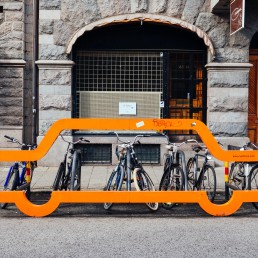The value proposition is all about creating customer value. But how do you do this? A value proposition describes why a customer should buy a product or service. In fact, it should target a very well-defined customer segment and convince potential customers that the product or service will add more value or better solve their problem than competitive products or services.
Essentially, a strong value proposition is a key source of competitive advantage – “it describes the way a firm differentiates itself from its competitors and is the reason why customers buy from a certain firm and not from another” – but when defining a value proposition a great challenge arises. Companies usually think of value proposition in terms of what they offer to their customers rather than what their customers truly value!
As Peter Drucker put it, “the customer rarely buys what the company thinks it is selling him”. How can we understand value from a customer perspective? By clearly defining what your target’s “jobs-to-be-done” are! Successful innovations don’t just solve consumer’s “jobs-to-be-done”; they must also address consumers’ anxiety and inertia that hold them back from accepting your innovation.
Jobs-to-be-done
“Job” refers to the ‘solution’ to a specific problem. This is usually more than just a straightforward technical task and involves often the experience around it. Take the example of a recently married couple looking to buy their first house. What they seek is a transition into a new life, in the specific circumstance of building a life together – completely different from the circumstance of a student who needs to find a room for the next academic year.

Furthermore, it is essential to consider the circumstances of the target consumer. Circumstances are more important than customer characteristics, product attributes, new technologies or trends. It is all about how the customer perceives value. Returning to the apartment example, it might be that the competition is not other houses, but the idea of going through the trouble of renting or owning a property. The key here is a fast and simple house buying experience.
Remember: jobs are never simply about the function – they have powerful economic, social and emotional dimensions. When you make the decision to buy a house you expect your financial situation to take a hit and even force you into deciding major trade-offs. A friendly payment plan over several years may help this investment seamlessly fit into the consumer’s life. Having two years’ worth of storage and a sorting room on the premises may give house buyers permission to work slowly through the emotions involved in deciding what to keep and what to discard.
Types of customer value
Close observations and deep interactions resulting from a good market research will lead you to a clear understanding of your customers’ “jobs-to-be-done” and values for your solution:
• Functional value – what does the product do? What problem does it solve for the user or customer?
• Economic value – is the product provided at a reasonable price point considering competing items and target customers’ ability to pay?
• Social value – how does the product enable the user to connect with others? How does it improve the status of the user in other people’s eyes?
• Emotional value – how does the product enable the user to feel about themselves?
The key here is to create a unique match between your product or service’s performance attributes and your target customer’s values. Yet, how can we get there?
-
Excited to translate your business idea into a scalable business model?
Simply sign up now to access our tutorials, videos and tools that guide you through the art of creating and testing winning business models.
All this, and a lot more – for free!







